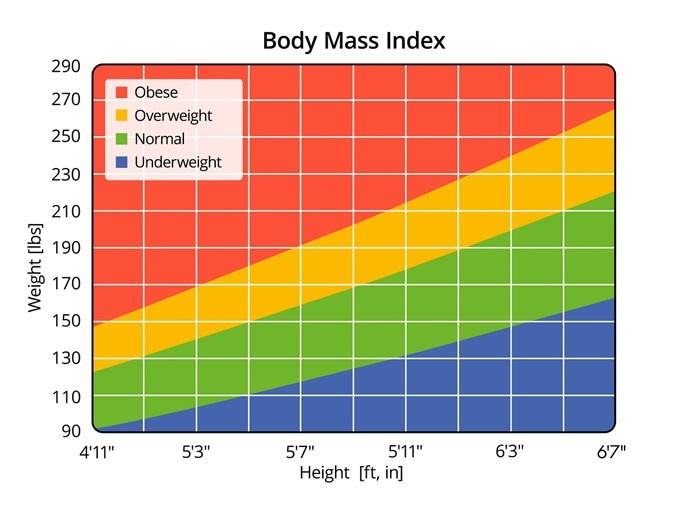Researchers have found that the global obesity epidemic may be boosted by the sedentary lifestyles of those living in rural areas. The study published as a letter titled, “Rising rural body-mass index is the main driver of the global obesity epidemic in adults,” in the latest issue of the Nature, shows that rates of obesity have tripled since 1975 and the driving force behind this are those living in the rural areas. It was believed that urbanization was the cause for rising obesity numbers globally. This study dispels that myth.
The team of researchers looked at over 112 million adults from 2009 population based studies from 190 countries and found that rates of obesity have risen exponentially in the rural areas compared to cities. The authors used cardiometabolic risk factors data from the participants of the Non-Communicable Disease Risk Factor Collaboration (NCD-RisC).

Image Credit: Ozgur Coskun / Shutterstock
Majid Ezzati, senior author of the report and a professor at Imperial College's School of Public Health in a statement said, “The results of this massive global study overturn commonly-held perceptions that more people living in cities is the main cause of the global rise in obesity. So this is entirely different to the current paradigm. This means that we need to rethink how we tackle this global health problem.” He added, “This rise in BMI has happened over a period of a few decades when the world has been rapidly urbanizing. So there was a widely stated assumption that urbanization is the main driver of the obesity epidemic. Our aim was to shed light on this.”
The team explains that Body Mass Index (BMI) of a persons needs to be within 19 to 25. Over the last thrity years, the authors write, the BMI rise has had a 55 percent contribution from the rural dwellers. The rise among people in rural areas between 1985 and 2017 was 2.1. Same was 1.3 for females and 1.6 for males living in cities. Middle and low income countries showed a wider gap between cities and rural areas and 80 percent of their obesity was from rural areas.
Changes in BMI between 1985 and 2017:
- Global BMI change from 22.6 kg m−2 to 24.7 kg m−2 in women
- Global BMI change from 22.2 kg m−2 to 24.4 kg m−2 in men
- Rise in mean BMI 2.09 kg m−2 and 2.10 kg m−2 among rural women and men respectively
- Rise in mean BMI 1.35 kg m−2 and 1.59 kg m−2 among urban women and men respectively
- Lowest sex-specific mean BMI was among rural women in Bangladesh (17.7 kg m−2) and in rural men in Ethiopia (18.4 kg m−2) in 1985
- Highest sex-specific mean BMI was among 35.4 kg m−2 among urban women and 34.6 kg m−2 among rural men in American Samoa in 2017
- There was a small fall in BMI among women of 12 nations in Europe and Asia Pacific
- There was a rise of >5 kg m−2 among women in Egypt and Honduras
- In 14 nations including “Armenia, Chile, Jamaica, Jordan, Malaysia, Taiwan and Turkey” rural women had higher BMI than their urban counterparts

Body Mass Index in lbs and ft, in - Illustration Credit: Zerbor / Shutterstock
Authors explain that rising use of cars and mechanization of agriculture seems to be one of the most important contributing factors to obesity in the rural communities. This means that life has become more sedentary than before. Professor Ezzati said, “Discussions around public health tend to focus more on the negative aspects of living in cities. In fact, cities provide a wealth of opportunities for better nutrition, more physical exercise and recreation, and overall improved health. These things are often harder to find in rural areas.”
The only exception, the authors of the study note are women living in rural sub-Saharan Africa who have a lower BMI compared to the women living in cities of the same region. The authors explain that this could be due to the amount of manual labour these rural put in each day including agriculture, domestic work and walking miles to gather water, fuel wood etc. Dr. Andre Pascal Kengne, director of South African Medical Research Council's Non-Communicable Diseases Research Unit in Cape Town, South Africa and one of the authors of this study, spoke about the differences in rural Africa. He said, “Life in rural Africa has remained largely physical — mostly agricultural, mostly manual labor. Domestic activities like fetching water are demanding. People tend to walk.”
Authors write that in high income countries and those that are industrialized, rural BMI was persistently higher especially among women. The authors call the changes “urbanization of rural life”. They write, “Mean BMI is the simplest summary statistic of the population distribution. Nonetheless, mean BMI and prevalence of overweight and obesity are closely associated.” This means that these results may be relevant in predicting trends of obesity globally.
The team calls for action on the part of the health officials and the government. This includes access to healthy foods and focus on healthy nutrition in the rural communities. This would also require public health awareness, they add. They write that there is a mass consumption of “low quality calories” in the poor regions and this has to be addressed. Ezzati concluded, “We deal with undernutrition by sending aid to remote areas. We deal with obesity by assuming it just applies to urban areas. It doesn't.”
Expert speak
Sherry Pagoto, a professor of health sciences at the University of Connecticut, explains that there are logistical problems in reaching out to the rural problems. For one thing they may not have easy access to the internet. This makes awareness and educational campaigns more difficult. Robert Wood Johnson Foundation is one of the groups that is working on improving rural health, she added. Pagoto said, “We have to think outside the box a little. How do you leverage what’s there in order to solve that problem more quickly?”
Lindsay Jaacks, professor of global health at the T.H. Chan School of Public Health at Harvard University said in addition that only 3 percent of the rural dwellers from high income countries actually worked in the agriculture sector. She added, “And in rural areas, people aren't biking or walking to work. They're driving. And there are fewer gyms and opportunities for leisure-time activities.”
Barry Popkin, food science researcher and professor of nutrition at the University of North Carolina at Chapel Hill School of Public Health said that there is a prevailing belief even among researchers regarding urbanization being linked to obesity and rural communities being spared of the epidemic. Popkin said that many health scientists believe that because of greater availability of processed foods, transport and sedentary office and home environments, cities might be the centres for unhealthy lifestyles. Popkin reviewed this paper and wrote an accompanying commentary in the journal issue. He said, “The general preconceived notion is that in rural areas, you live off the land, your farm or do manual labor, you eat food from your own garden.” Popkin added, “We've automated work in a lot of rural areas. People may not have a huge reaper, but they have cheaper, smaller versions. We've automated farming, forestry, mining. So energy expenditure is really going down fast. And junk food. It's so highly preserved, it can be shipped anywhere. We've penetrated every corner of the world with junk food.”